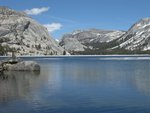
NPS Photo
DEATH VALLEY, CA – Known as the hottest place on Earth, Death Valley National Park just experienced its hottest month on record: 108.1⁰F. If that doesn’t sound hot to you, realize that is the average temperature for the month, including overnight lows.
The heat was unrelenting. Daytime highs reached 120⁰F or higher all but one of the last 18 days of July, with a brief dip to a high of 115⁰F on July 21. Death Valley reached a high temperature of 127⁰F four days in a row.
National Park Service rangers and others have responded to multiple heat-related incidents. Heat contributed to the death of Peter Rhoad, a 57-year-old man from Huntington Beach, California, who fell while hiking to Panamint Butte in mid-July. Two French tourists attempted to scramble directly from Dantes View (elevation 5,475 feet) down a steep, loose slope to Badwater (elevation 282 feet below sea level). They were rescued by a Navy helicopter based at China Lake Naval Weapons Area after encountered unclimbable cliffs, overheating, and dehydration.
Even the local animals have been suffering. “During the past two weeks we have found about a dozen dead animals that have no obvious signs of trauma. We suspect that these animals are casualties of this record period of heat,” said Josh Hoines, Chief of Natural and Cultural Resources Management in Death Valley National Park.
There’s no immediate relief in sight. Daytime highs are predicted to reach at least 120⁰F through Saturday, August 4.
While the daytime high temperatures are attention-grabbing, the overnight lows are significant also. Temperatures didn’t drop below 100⁰F ten nights in July. Those “low” temperatures are usually around 5:00am, and temperatures soar again as the sun rises. Death Valley set new record high overnight lows on six dates last month.
Park rangers urge summer visitors to stay in well-traveled areas of the park, so that other people might provide help in case of a vehicle break-down. Cell phones do not work in most of the park. Other tips for a safe visit include drinking plenty of water, eating snacks, limiting activities outside of air-conditioning, and visiting viewpoints at higher elevations, like Dantes View.


